
Building a guest house is one of the largest home projects and involves several different professionals. Learn about the cost to build a guest house and where you can save.
It's the battle of form and function


Pedestal sinks are simple structures with a basin mounted on a pedestal base.
Vanity sinks have the basin built into a countertop, usually with cupboard storage below.
While vanities provide more storage, pedestals offer easy cleaning and have a smaller footprint.
You can find both in a range of styles and prices.
Regarding bathroom sinks, there are two main options: pedestal and vanity. Pedestal sinks are great for those who want a space-saving solution, while vanity sinks provide more storage capacity. The choice between the two depends on the size of the bathroom, your design preferences, and your storage needs. To determine which works best for you, let's dive into the battle of pedestal sink versus vanity.
The primary differences between a pedestal sink and a vanity are their structure and function. A pedestal sink’s design includes a basin mounted on a pedestal base, offering a minimalist design and saving space. However, it lacks storage space. On the other hand, vanities consist of a sink, a countertop, and storage cabinets or drawers. This design provides versatility in style, ample storage, and an integrated countertop for added functionality.
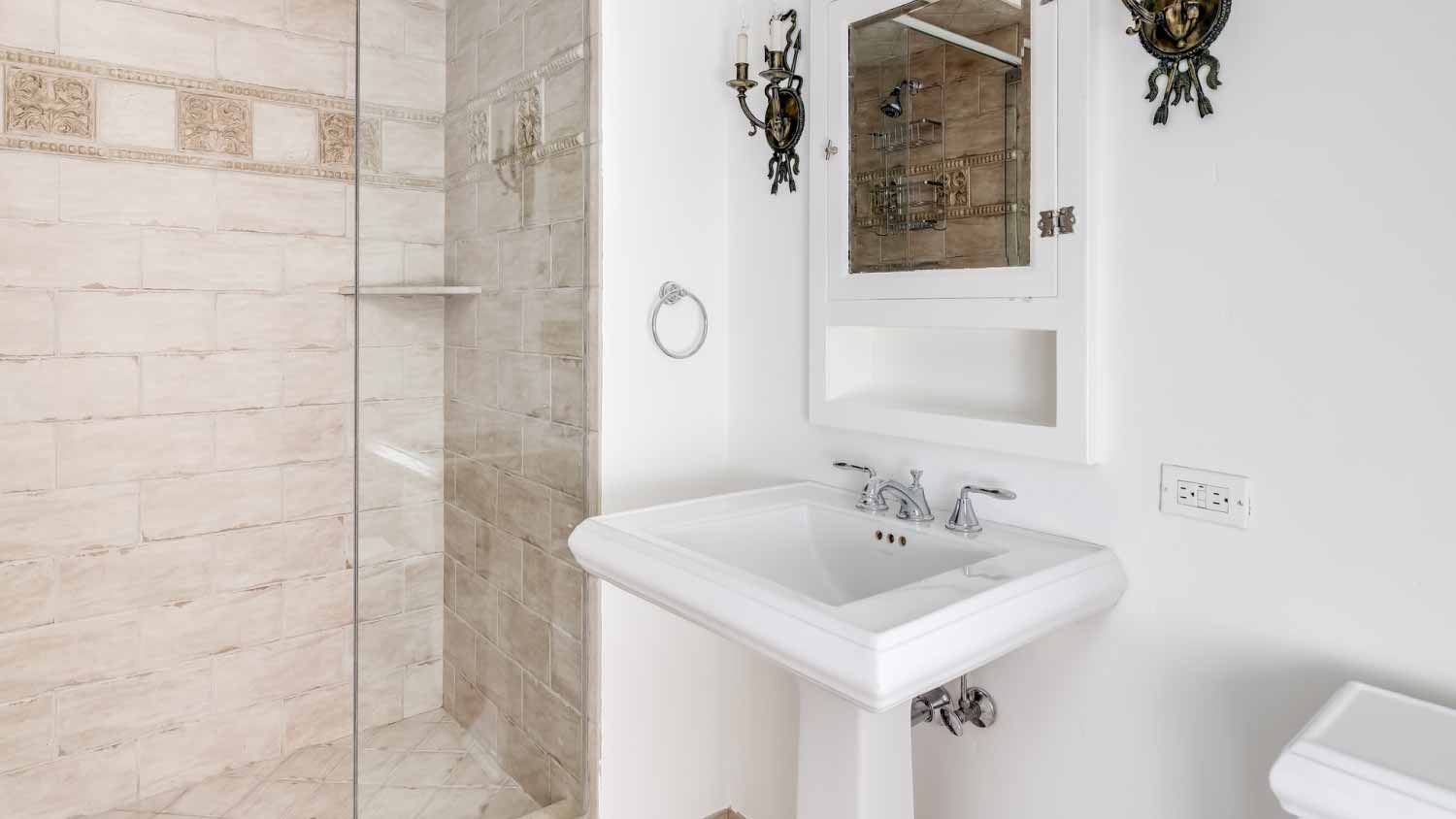
One of the most striking features of a pedestal sink is its elegant and classic appearance. The slender pedestal that supports the basin conceals most plumbing, but not always. Pedestal sinks are available in various styles, from traditional to modern.
| Pros | Cons |
|---|---|
| Space efficiency | No storage |
| Easy to clean | Exposed plumbing |
| Versatility | No counter space |
Best for:
Small bathrooms where a vanity will not fit.
Powder rooms where storage needs are minimal.
Bathrooms that already have ample storage.
Pedestal sinks are ideal for smaller bathrooms or powder rooms where maximizing space is essential. Compared to traditional vanity sinks, pedestal sinks take up less floor space.
Another significant advantage of pedestal sinks is their versatility. They come in various shapes, sizes, and materials, ensuring an option to suit every design need, and their timeless appeal adds a touch of sophistication to any bathroom decor. Whether one prefers a sleek and contemporary look or a more traditional style, there's a pedestal sink to match every taste.
The absence of cabinets or countertops around pedestal sinks simplifies cleaning and maintenance. Without tight corners or crevices for dirt to accumulate, cleaning the sink area is quick and effortless, making pedestal sinks a practical choice for busy households.
One of the most significant drawbacks of pedestal sinks is their lack of built-in storage options. Unlike traditional vanity sinks, which often feature cabinets or drawers for storing bathroom essentials, pedestal sinks offer minimal to no storage space. They don’t have counter space either, which can be impractical for tasks that require a surface for toiletries, cosmetics, or other items, potentially leading to cluttered sink areas.
Some pedestal sinks also leave pipes visible, or you can see plumbing connections from the side, which may not align with your design preferences.
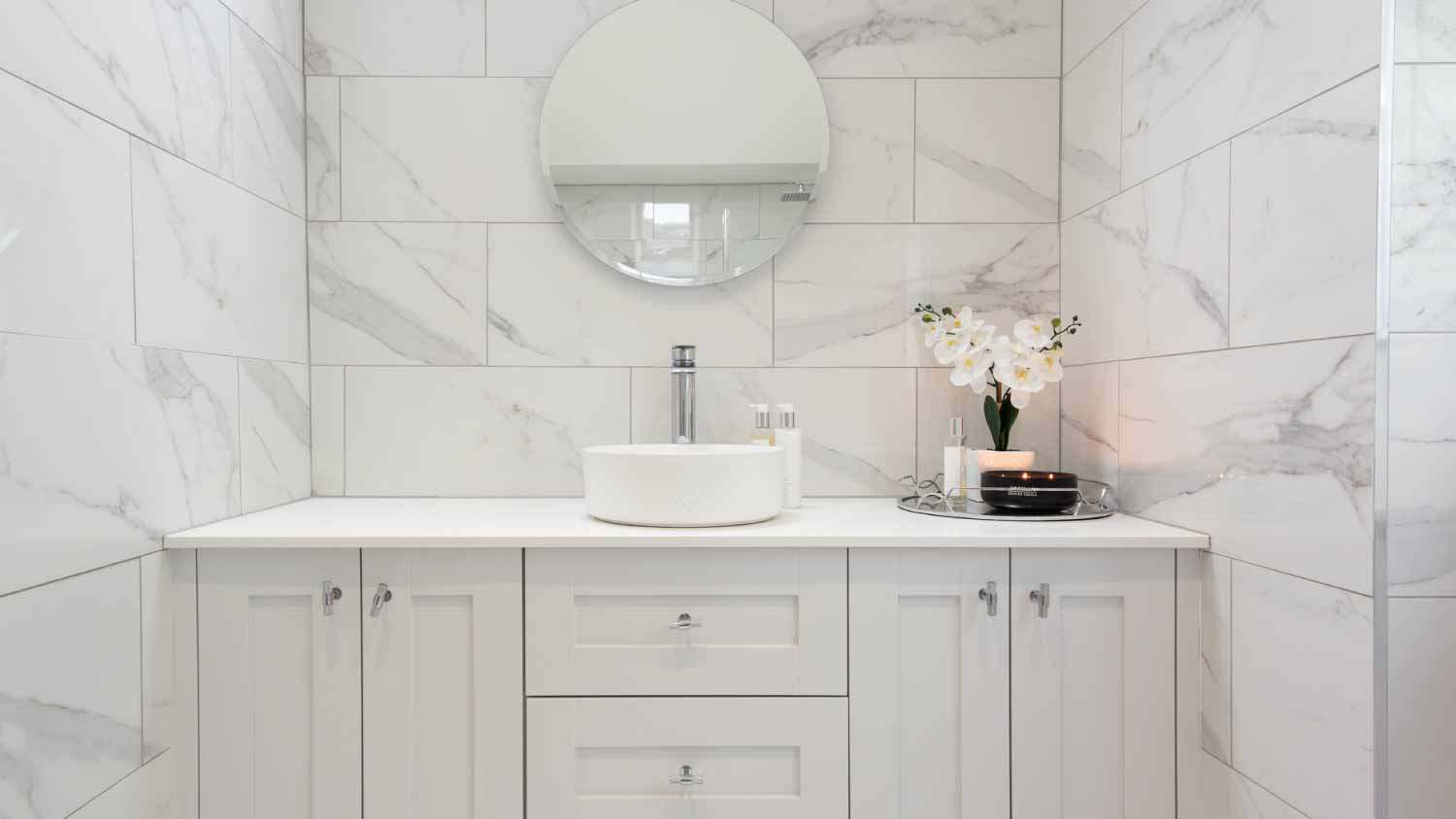
A bathroom vanity has a sink or basin, a countertop, and storage space. It serves both functional and aesthetic purposes in the bathroom. Bathroom vanities come in different styles, sizes, and configurations to accommodate various preferences and spatial limitations.
| Pros | Cons |
|---|---|
| Storage | Space requirements |
| Countertops | Water damage |
| Hides plumbing | Hard to clean |
Best for:
Family bathrooms that require lots of storage.
Primary bathrooms that need counter space for two adults.
Guest bathrooms where visitors can store personal items.
Bathroom vanities are appreciated for their versatility, addressing functional and aesthetic requirements. Their storage space efficiently organizes towels, toiletries, and cleaning supplies, promoting a clutter-free and tranquil bathroom environment.
Similarly, countertops provide room for toiletries, cosmetics, and grooming accessories, ensuring easy access and organization. Available in various materials, including marble, granite, quartz, and laminate, countertops are customized to suit the homeowner's design preferences and budget.
Vanities contribute to a polished and cohesive bathroom design, concealing plumbing connections and creating a more refined look, which may add value to the home.
Bathroom vanities occupy a lot of floor space, and their bulkiness can make the room feel cramped or overcrowded, especially in tight quarters. Dust, dirt, and grime may accumulate in the storage compartments and on the countertop surface, requiring regular cleaning to keep the vanity looking its best.
We would be remiss if we didn't mention the possible water damage to a vanity's cabinetry from splashes, steam, and spills. Prolonged exposure to moisture can cause wooden cabinets to swell, warp, or even rot over time. Proper sealing, regular maintenance, and prompt leak repair are essential to prevent water damage and prolong the life span of a bathroom vanity.
The choice between pedestal sinks and vanities ultimately depends on space availability, storage needs, design preferences, and your budget. Each option offers its own set of advantages and considerations for homeowners to consider.
Bathroom vanities are the clear winner for storage. Cabinets, drawers, shelves, and countertops offer designated areas to organize all your bathroom essentials. Plus, vanities come in a wide range of sizes, making finding options for small spaces possible.
Because they are typically ceramic or porcelain, pedestal sinks are easy to clean and require less maintenance. You can wipe them clean using a cloth and a non-abrasive cleaner, and there are no shelves or cupboards to scrub. Easy peasy.
As the adage goes, beauty is in the eye of the beholder. While vanities arguably offer a broader selection of sizes, materials, and colors, pedestal sinks come in various styles, from traditional to modern.
The price range for a pedestal sink falls between $300 and $1,100, with professional installation costs varying from $330 to $730. On the other hand, the total installation cost for vanity, including installation, can span from $300 to $3,800. Naturally, these figures may fluctuate depending on location and other variables. It's advisable to consult a local sink installer near you for accurate pricing.
From average costs to expert advice, get all the answers you need to get your job done.

Building a guest house is one of the largest home projects and involves several different professionals. Learn about the cost to build a guest house and where you can save.

The cost to add a bedroom and bathroom can pay off with an increase in your home’s value and more space for you and your family. Costs vary by project scope.

The cost to add a half bathroom varies based on geography and your choice of additions. Read on to discover just what factors into your total project cost.
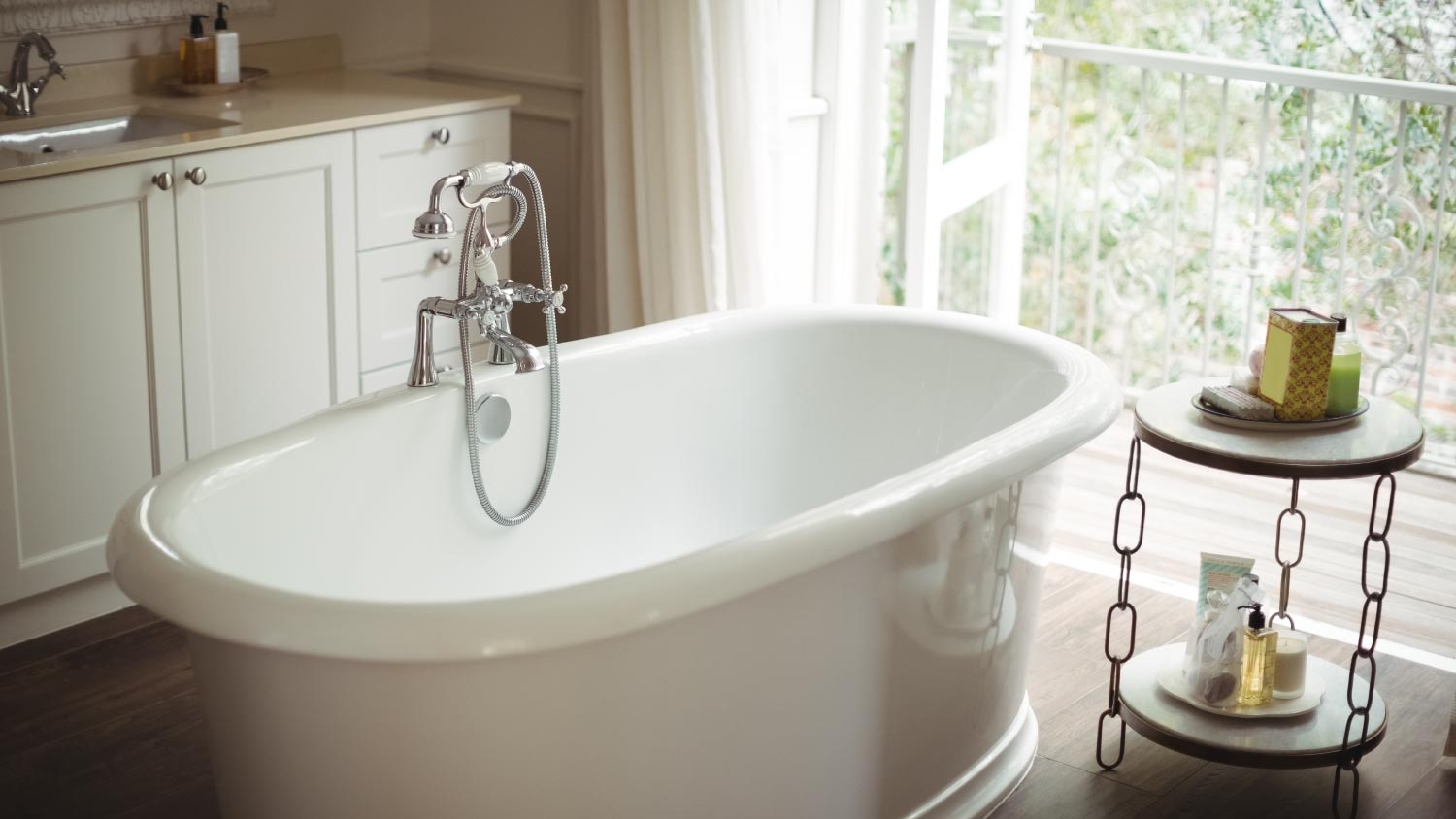
An updated bathtub can give a bathroom a whole new look. Find out how much it costs to replace a bathtub in Los Angeles, CA, including prices by type and labor costs.
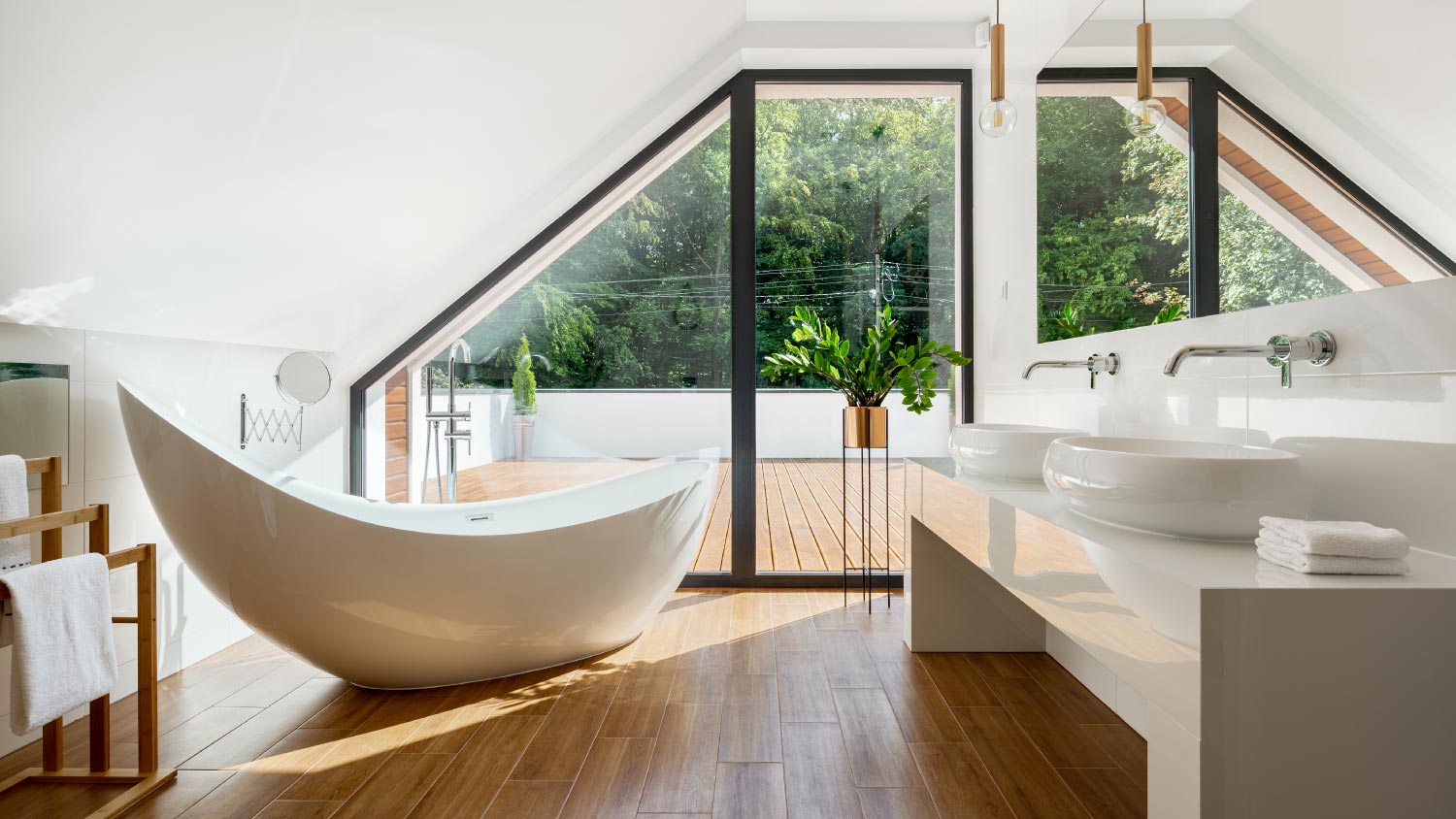
An updated bathtub can give a bathroom a whole new look. Find out how much it costs to replace a bathtub in Orlando, FL, including prices by type and labor costs.
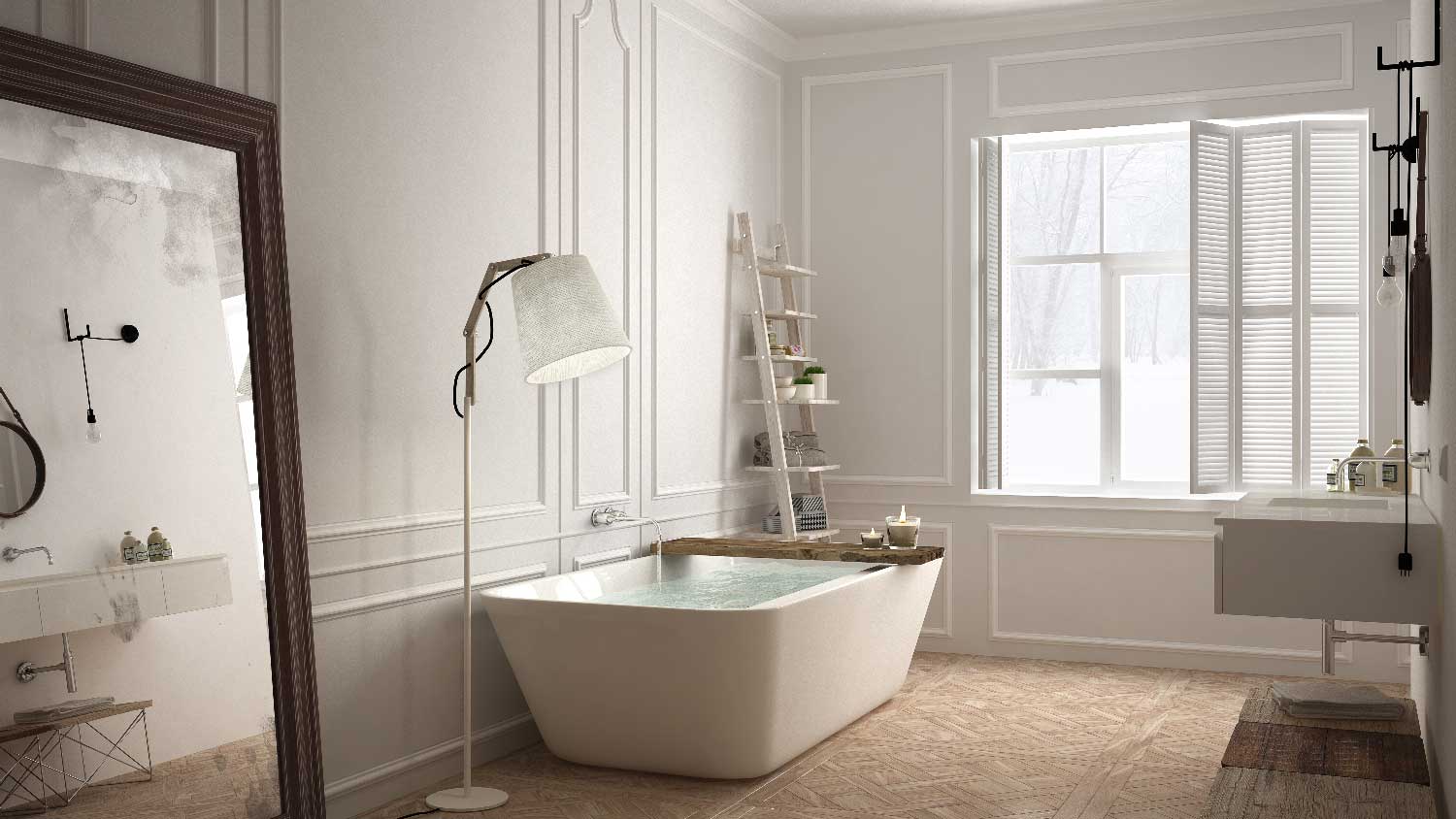
An updated bathtub can give a bathroom a whole new look. Find out how much it costs to replace a bathtub in Minneapolis, MN, including prices by type and labor costs.